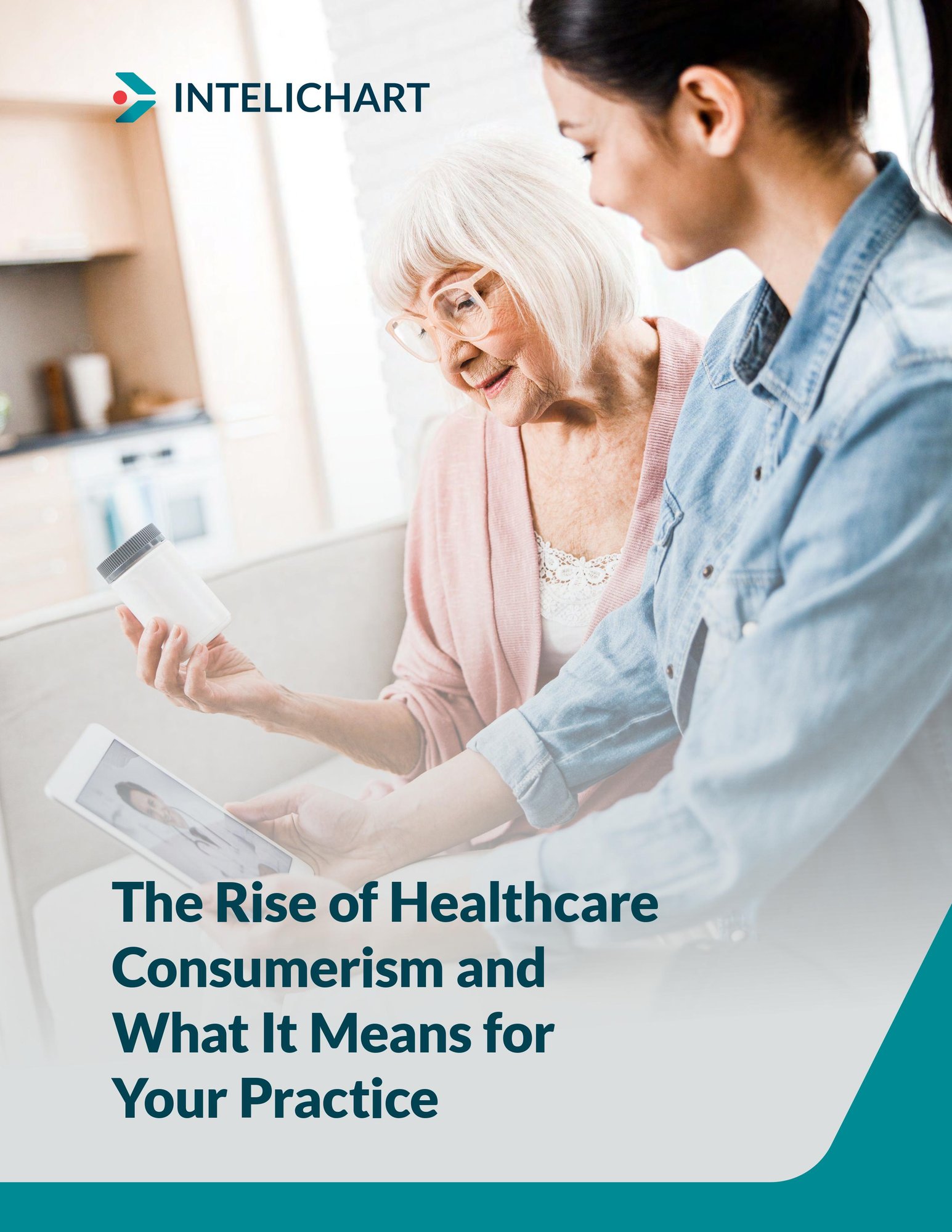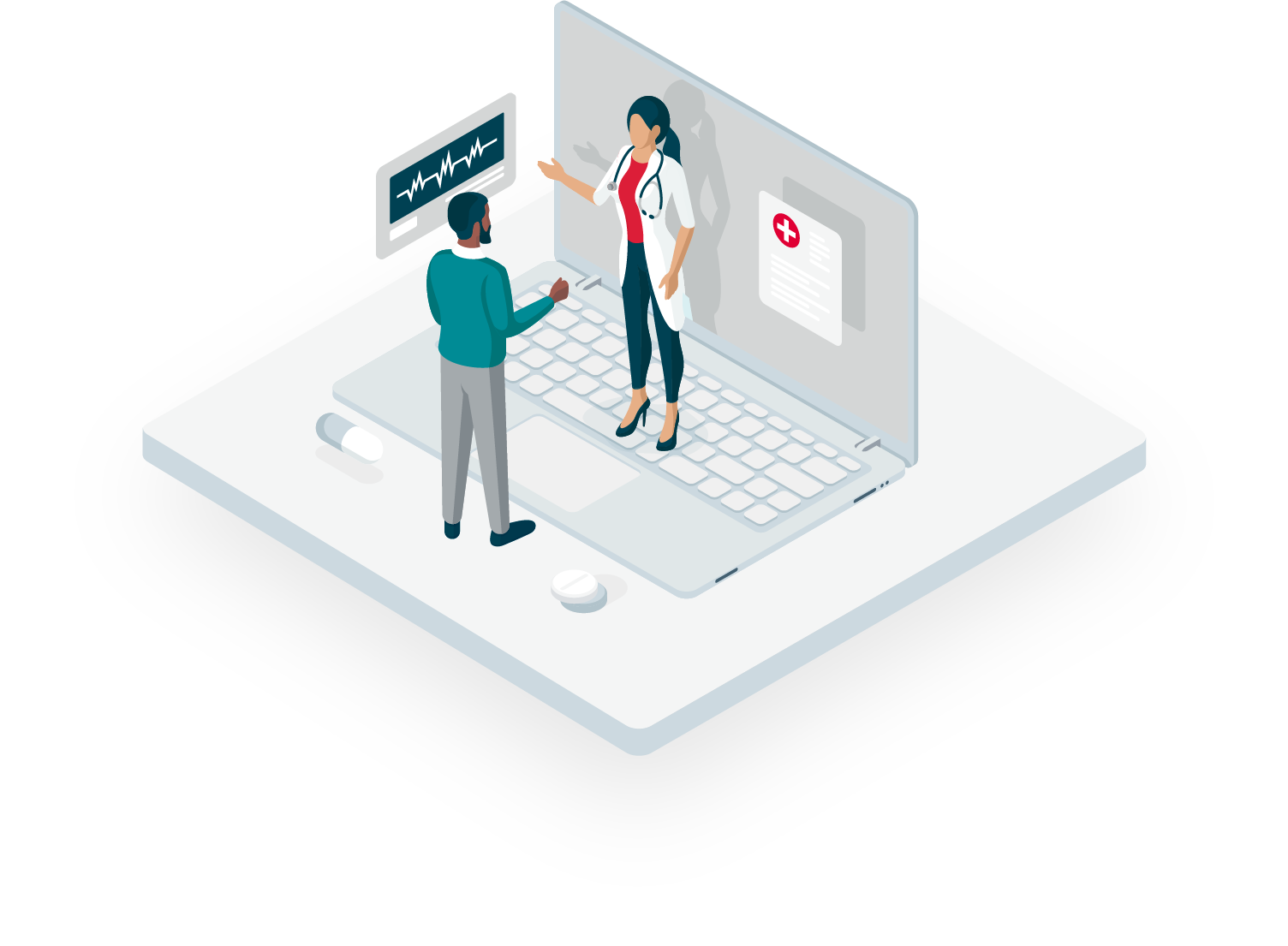Chapter 4
5 Ways Practices Can Address Healthcare Consumerism
So, how exactly can healthcare practices address consumerism and offer a more patient-centric experience that keeps people coming back instead of heading to the nearest retail clinic? Here are five ways to get started at your organization:
1. Adopt a hospitality mindset
It’s not enough to aim for just satisfied patients—healthcare organizations need to create an optimal consumer experience by developing a service culture with patient-centric workflows. When asked about their consumer-centric priorities, 81% of respondents said that improving the customer experience is high on the list; however, only 11% reported having best-in-class capabilities.
By building a solid foundation with consumers’ needs in mind, providers can meet expectations and retain patients. To do so, think about what common pain points are within existing processes, and see what can be done to alleviate them. For example, what’s your patient registration and intake process like? How long is your average wait time? 20% of patients report that they will switch providers if forced to wait too long.
If waiting room backlogs cause lengthy waits and delays, consider revamping associated processes by digitizing patient intake paperwork to minimize churn. Also, make it a priority to offer multiple care delivery options; virtual care visits should be available for consumers who prefer to go the digital route and/or those who are located in rural areas that are far away from a provider.Understanding Clinical Workflows
2. Take an informed, strategic approach.
Another important thing to keep in mind when addressing healthcare consumerism is to always make informed decisions using consumer insights derived from satisfaction surveys and patient-reported outcomes (PROs). Using insights to guide strategic planning will allow you to make changes based on what’s important to your patient populations, as it’s different for every specialty.
Generally speaking, your healthcare consumerism strategy should be focused on convenience, accessibility, ease, and cost. Consider what the patient experience is like at your organization currently: Do you make it easy for them to schedule appointments? To access care with ease? To review their own health data?
While most practices are only open during business hours, retail clinics or telehealth services are often available at more convenient times, such as after-hours and on weekends. This is especially important for certain specialties. For example, providers in pediatrics should consider offering more convenient hours to accommodate parents who would otherwise need to take off work.
3. Implement patient feedback mechanisms.
The best way to learn what consumers want and need is to collect positive and/or negative feedback and adapt consumerism techniques to address their needs. Use technology to send automated surveys to targeted patient populations, and gain beneficial insights ranging from pain level and medication adherence to PROs.
Patient satisfaction ratings no doubt play a big role in healthcare consumerism, especially with online Google searches and the ratings found there. Consumers today consult the web to read provider reviews and make decisions regarding their care. That’s why solid reputation management is essential to retain existing patients and attract new ones—but you need patient feedback to do so.
Once you’ve collected valuable feedback from patients in your care, you can implement meaningful change and adapt to better meet their needs. For instance, if you receive negative feedback on a poor scheduling process, you may consider changing your existing workflows to make booking appointments easier and more convenient for patients.

4. Ensure healthcare information transparency.
Transparency is no longer a nice-to-have in healthcare today; it’s actually a must-have to appease modern consumers. Ensuring healthcare information is transparent and readily available to patients has two major benefits for providers.
Fulfilling Federal Regulations: By offering patients easy, digital access to relevant health data, healthcare organizations can fulfill their Meaningful Use Stage 2 requirements. This not only decreases the risk of financial penalties, but also means providers qualify for an incentive payment.
Improving Quality of Care: Adherence, outcomes, and overall quality of care improve when patients have complete accessibility to care plans and don’t have to rely on memory post-visit. In turn, providers see higher reimbursements due to improved quality of care—it’s really a win-win!
It’s also incredibly important to provide price transparency. As consumers become increasingly responsible for out-of-pocket expenses due to high-deductible health plans, they’re consistently keeping a much closer eye on cost and factoring it into their care decisions. That said, only 28% of survey respondents said that providing price transparency is a top priority for their healthcare organization.
5. Empower consumers with the right digital tools.
Technology plays such a significant role in delivering on consumer expectations. Modern healthcare consumers are accustomed to using digital tools that empower them to take a more active role in care decisions.
Research shows that consumers are increasingly choosing providers who offer digital capabilities, and that momentum is certain to continue. This is especially true for younger generations who grew up as digital natives, like millennials and Gen Z, but it’s true for older generations as well.
90% of today's healthcare practices offer a patient portal to provide:
- 24/7 mobile-friendly access
- Appointment scheduling
- Digital patient registration
- Post-visit care summaries
- Flexible financial options
- Two-way communication
- And much more
When patients can take action using self-service tools, they’re more likely to remain with their current provider and engage in their own care. Expanding digital capabilities through technology partnerships leads to added value and more convenient options for existing and potential patients.




